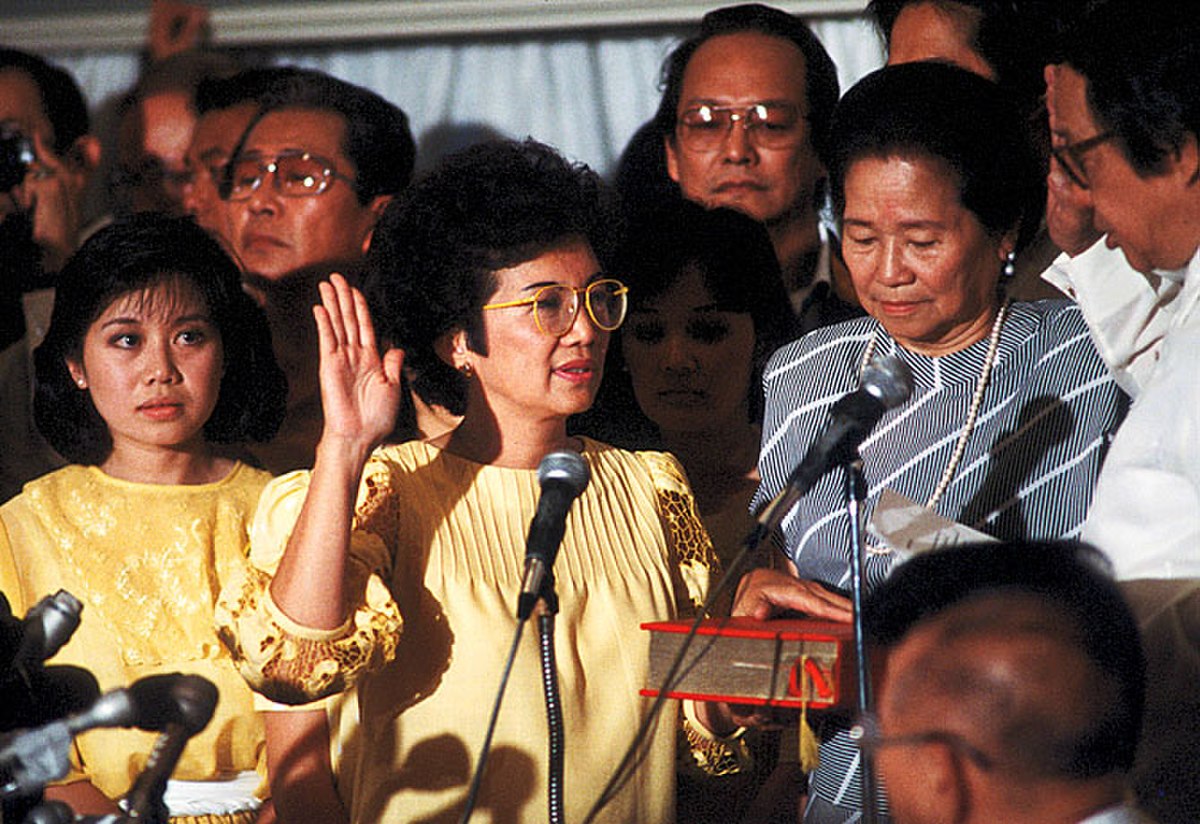
Fifth Republic
PhilippinesThe return of democracy and government reforms beginning in 1986 were hampered by national debt, government corruption, coup attempts, disasters, a persistent communist insurgency, and a military conflict with Moro separatists. During Corazon Aquino's administration, U.S. forces withdrew from the Philippines, due to the rejection of the U.S. Bases Extension Treaty, and leading to the official transfer of Clark Air Base in November 1991 and Subic Bay to the government in December 1992. The administration also faced a series of natural disasters, including the eruption of Mount Pinatubo in June 1991.. Aquino was succeeded by Fidel V. Ramos. During this period the country's economic performance remained modest, with a 3.6% percent GDP growth rate. Political stability and economic improvements, such as the peace agreement with the Moro National Liberation Front in 1996, were overshadowed by the onset of the 1997 Asian financial crisis.
Ramos' successor, Joseph Estrada assumed office in June 1998 and under his presidency the economy recovered from −0.6% growth to 3.4% by 1999. The government announced a war against the Moro Islamic Liberation Front in March 2000 and attacked various insurgent camps, including their headquarters. In the middle of ongoing conflict with the Abu Sayyaf, accusations of alleged corruption, and a stalled impeachment process, Estrada was overthrown by the 2001 EDSA Revolution and he was succeeded by his Vice President, Gloria Macapagal Arroyo on January 20, 2001.
In Arroyo's 9-year administration, the economy grew at a rate of 4-7%, averaging 5.33% from 2002 to 2007,tation needed and did not enter recession during the Great Recession. Her rule was tainted by graft and political scandals like the Hello Garci scandal pertaining to the alleged manipulation of votes in the 2004 presidential elections. On November 23, 2009, 34 journalists and several civilians were massacred in Maguindanao.
Benigno Aquino III won the 2010 national elections and served as the 15th president of the Philippines. The Framework Agreement on the Bangsamoro was signed on October 15, 2012, as the first step of the creation of an autonomous political entity named Bangsamoro. However, a clash that took place in Mamasapano, Maguindanao killed 44 members of the Philippine National Police-Special Action Force and put the efforts to pass the Bangsamoro Basic Law into law in an impasse. Tensions regarding territorial disputes in eastern Sabah and the South China Sea escalated. In 2013, two more years were added to the country's ten-year schooling system for primary and secondary education. In 2014 the Enhanced Defense Cooperation Agreement, was signed, paving the way for the return of United States Armed Forces bases into the country.
Former Davao City mayor Rodrigo Duterte won the 2016 presidential election, becoming the first president from Mindanao. On July 12, 2016, the Permanent Court of Arbitration ruled in favor of the Philippines in its case against China's claims in the South China Sea. After winning the Presidency, Duterte launched an intensified anti-drug campaign to fulfill a campaign promise of wiping out criminality in six months. As of February 2019, the death toll for the Philippine Drug War is 5,176. The implementation of the Bangsamoro Organic Law led to the creation of the autonomous Bangsamoro region in Mindanao.
Former senator Ferdinand Marcos Jr. won the 2022 presidential election, 36 years after the People Power Revolution which led to his family's exile in Hawaii. He was inaugurated on June 30, 2022.
